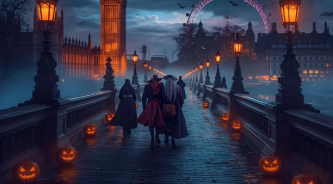The City of London is often described as being a city of Wren churches, with the biggest of them all being St Paul’s Cathedral. The reasons for this lie deep within one of the biggest disasters ever to hit the City of London.
Back in September 1666, it was early morning when the cry of ‘fire’ was heard close to London Bridge not too far from Presidential Apartments Kensington. The story goes that a spark from a baker’s fire had ignited the house. All the family managed to escape – except for a servant who was so terrified of heights that she could not face the mad scramble across the rooftops to get away from the blaze.
It was a sound that terrified people of the time. Virtually all the buildings in the city of London were wood and thatched with reeds and straw – a highly combustible mixture. Neighbours fled into the streets and began passing buckets of water hoping to douse the flames. Others pulled down adjacent buildings hoping to stop the fire spreading. It didn’t. The fire rapidly took hold and over the next three days spread for several miles across the city and down past St Paul’s Cathedral. Thousands of people were involved in fighting the blaze – including the King of England Charles II and his brother James, the Duke of York. The exact number of homes destroyed is unknown, but it is estimated to have been over 13,000 – plus 87 churches and St Paul’s Cathedral itself.
Many years later, a monument to the fire was erected close to London Bridge. Known simply as The Monument, it has given its name to the nearby underground station. The Monument is open to the public and you can climb to the top for an unusual view of London Bridge through the rooftops of modern London.
A massive rebuilding programme began soon after what became known as The Great Fire of London. The programme was led by an architect called Sir Christopher Wren. It was decreed that all buildings had to be made of stone, and roofed with non combustible materials. He was responsible for the re design of most of the churches as well as St Paul’s Cathedral – hence the name Wren churches.
A major exhibition has opened in the Museum of London about this disaster, which took place exactly 350 years ago. Visitors staying either in hotels or serviced apartments London are able to step back into Pudding Lane and see just what life was like for seventeenth century Londoners. You can discover the bakery where the fire started and discover how the fire spread so fast. Among the objects on display are items found by archeologists working in the area that were actually melted by the heat of the flames, and with a little bit of help from the displays you may be able to work out just what they were. And of course, find out the stories of the people who were involved in the disaster. Samuel Pepys was a civil servant living in London at that time, and he kept a detailed diary of all his activities – including all that he saw of the fire and its destruction.







